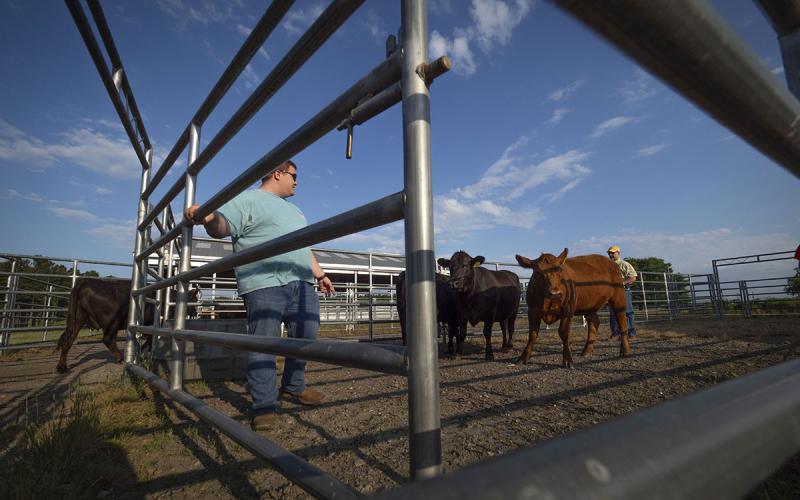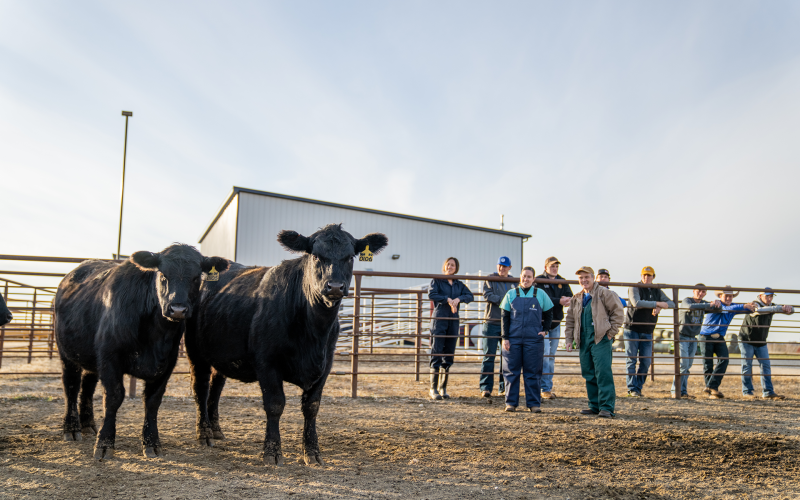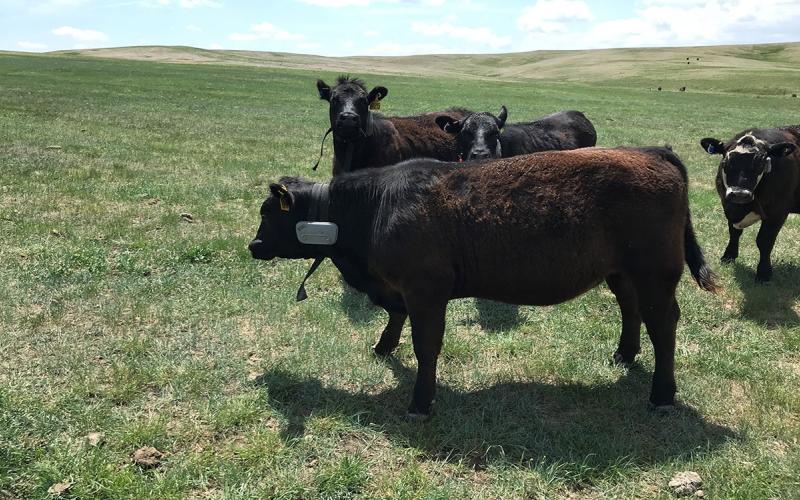Cattle go through a variety of stressors in their lifetime. Transporting and receiving cattle into a yard are some of the most stressful times in a beef animal’s life. This stress is intensified when newly weaned calves go through this process. However, no matter the class of cattle or stage or production they are in, having proper receiving management can help prevent undesirable performance outcomes.
Transportation and Handling

Transportation is an essential component of the beef industry. When preparing cattle for transporting, low stress handling methods should be practiced. Allowing additional time for cattle to load without excessive force and vocalization can reduce stress hormone levels and avoid injury to cattle and handlers. Ensuring trailers and cattle pots are lined up squarely and handling facilities are functioning properly can reduce injury to cattle and reduce additional stress. The same scenarios apply for unloading cattle. Taking the extra time to ensure cattle and handler safety and well being can save headaches when cattle arrive at the next facility.
Water
When receiving cattle, allowing plenty of clean water is an essential first step. Waterers should be located in a place that is easily accessible to all cattle. There has been some discussion in academia about waterer placement in pens. Waterers located along the fence line have been thought to encourage drinking as cattle oftentimes walk around the perimeter of the pen. However, having waterers located in the center of the pen can allow visible and easy access for cattle. Regardless of placement, additional temporary waterers should be provided as necessary to ensure all cattle don’t become dehydrated.
Feed
For cattle arriving at dry lot facilities, providing long-stem hay is a good practice. Long-stem hay helps to stimulate activity of rumen microbes and facilitate the rumen environment to avoid acidic conditions. Rumen activity helps to promote digestion and provide nutrients needed for normal bodily processes. The immune system is one of the bodily processes that is directly impacted during transportation and receiving. These events are stressful and lead to increased immune response, plus extending the time of transportation or handling cattle in a stressful manner can lead to heightened immune response. Elevated immune response can have negative impacts on performance and productivity, which may further result in morbidity and mortality. Administering vaccinations prior to the weaning event has shown to better help prepare the immune system of calves during receiving at weaning. However, vaccination timing following weaning is dependent on prior management, vaccine history, and the health risk level of calves.
In the days after arrival, long-stem hay can be gradually mixed with the receiving ration to aid in ration transition. Hay can be provided up to 3 to 5 days depending on how the cattle are adapting to the ration and the amount of roughage in the ration (higher rougher rations only needing 3 days for adaptation). Cattle should consume 1 to 1.5% of their body weight within the first week following receiving. They should be stepped up every couple of days as they slick up bunks. Ideally, cattle should consume 2 to 2.5% of their body weight by 21 days on feed. However, it is important to gradually step up cattle to a ration based on their ability to slick up bunks rather than providing too much feed too quickly and having them go off feed. This will better prepare them and their digestive systems as they progress through the finishing period.
Health

Observing newly received cattle early is critical for preventing disease outbreaks, especially in newly weaned calves. Various scoring systems are used to rank cattle on their level of illness.
Depression Scoring
A common system used is determining calf depression scores. Depression scores (Table 1) are ranked on a scale of 0 (normal) to 4 (moribund). Calves with depression scores greater than 1 are considered high-risk calves.
Recent research has suggested that depression scores peak between day 7 and 8 following arrival at a facility. Therefore, it is recommended that calves be observed for at least 14 days to catch problematic calves. These calves should be monitored closely and treated according to veterinary recommendations.
| Score | Clinical Signs – Monitor first 14 to 21 days |
|---|---|
|
|
Normal, no signs of depression |
|
|
Slower than pen mates but still perks up when approached and does not appear weak, actively follows your movements with a raised head |
|
|
Stands with head lowered, will perk up when approached but will return to depressed stance, moves slowly and falls towards back of group, may display signs of weakness such as incoordination |
|
|
Obviously very weak, difficulty in moving with group, raised head only when approached closely |
|
|
Moribund, unable to rise |
Adapted from Perino et al., 1998
Fecal Scoring
Other factors to consider include dust and fecal scores. If pen conditions are dry and dusty, managers should consider wetting down pens to avoid stress caused by dust, so it does not hinder health. Fecal scores are good indicators of water and feed consumption, as well as provide insight for ruminal acidosis. Fecal scores (Table 2) are ranked on a scale of 1 (very liquid) to 5 (stiff fecal balls). Cattle that are recently received will likely have manure scores of 2. It is not uncommon for 5% of the herd to have different scores from the herd average. However, manure scores of 1 should be monitored for health issues. Manure scores of 5 should be monitored for dehydration and additional waterers should be provided.
| Score | Symptoms - Monitor first 14 to 21 days |
|---|---|
|
|
Very liquid, runny, shallow puddles, indicates ruminal acidosis or hindgut irritation |
|
|
Manure does not pile, is fairly loose and stands up to 2.5 cm tall, indicates ruminal acidosis or hindgut irritation, but less extreme concern than a 1 |
|
|
Thick, custard-like consistency that stand 4 cm tall, forms concentric rings, indicates good rumen health and well-digested ration |
|
|
Thick manure, well-formed, could indicate too much fiber in the ration or not enough rumen degradable protein in the ration |
|
|
Stiff fecal balls, stacking easily up to 10 cm tall, likely indicates dehydration or possible imbalanced ration |
Adapted from Gardner, 2021.
Summary
There are multiple factors that influence cattle help during transportation and receiving. Proper management during these events can avoid negative implications to health and performance. Taking the time to account for these factors can save producers in more ways than one in the long run. These factors are especially important to consider as the beef industry continues to feed cattle to heavier carcass weights and for longer days on feed.
References
- Gardner, B. 2021. Cattle Manure: A simple and essential rumen health indicator.
- Perino, L.J.; Apley, M.D. Clinical Trial Design in Feedlots. Vet. Clin. N. Am. Food Anim. Pract. 1998, 14, 343–365.


